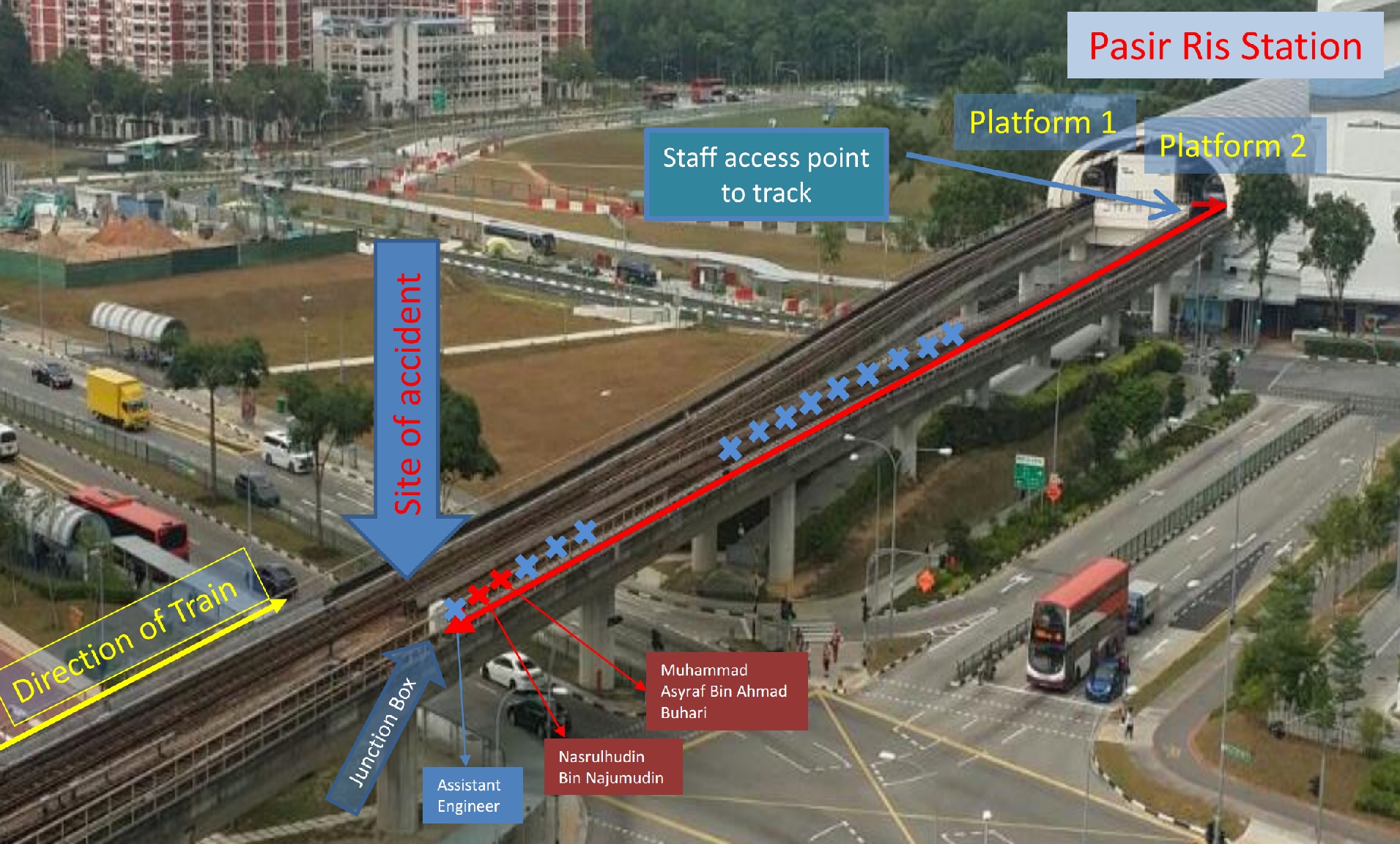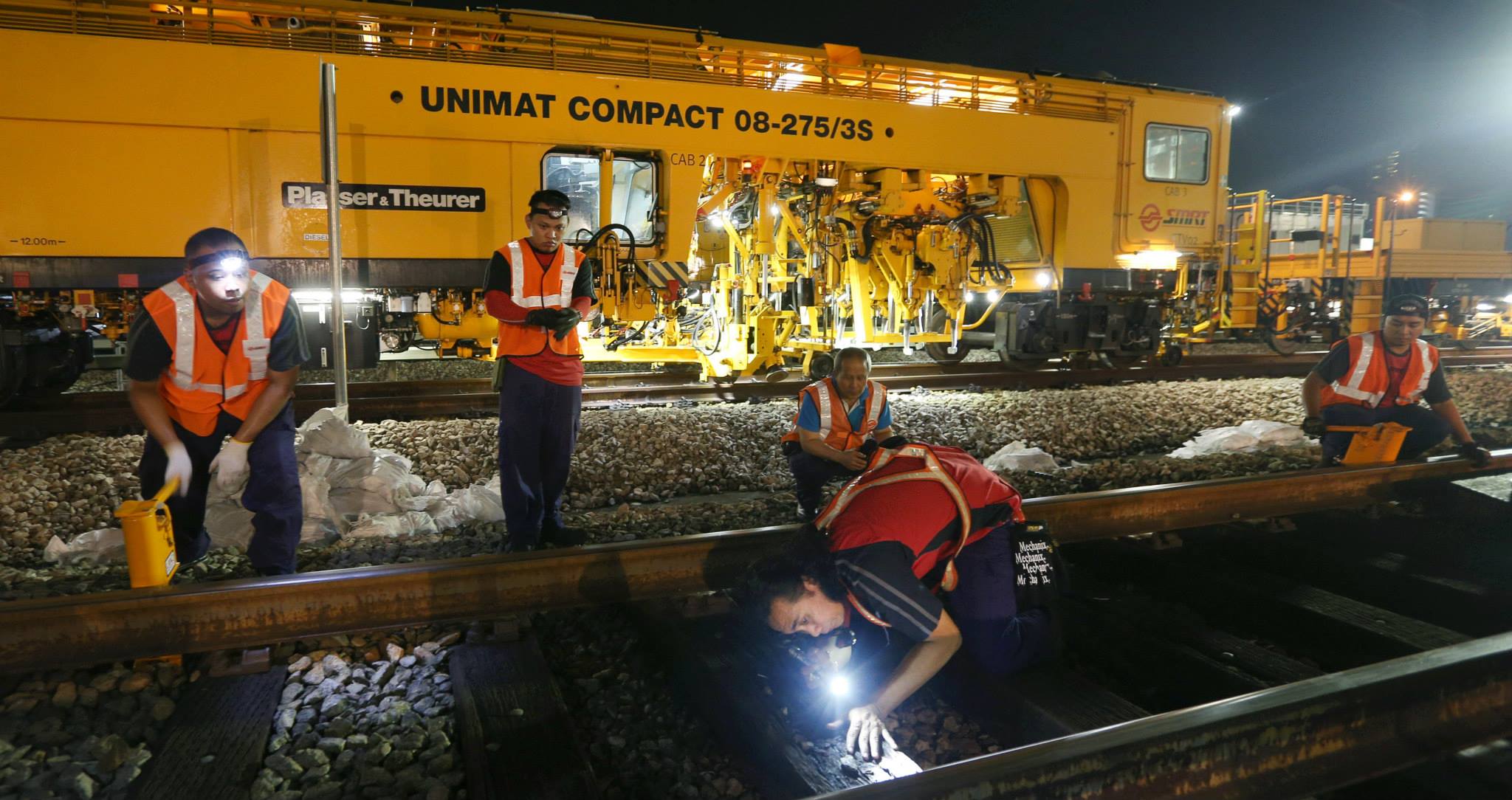It has been two days since the tragedy where two trainees were killed by an oncoming SMRT train near Pasir Ris station.
Nearly 500 attended the funeral service of Nasrulhudin Najumudin, 26, and Muhammad Asyraf Ahmad Buhari, 24, who were buried beside each other at a Muslim cemetery in Lim Chu Kang.
Prime Minister Lee Hsien Loong expressed his condolences to their families on March 22, saying that "we must our best to ensure this (incident) does not happen again".
Saddened to learn about the deaths of two SMRT trainees today. My deepest condolences to their families. We understand...Posted by Lee Hsien Loong on Tuesday, March 22, 2016
Safety Lapse by the SMRT
SMRT has updated the public in a press release last night, March, 23, to reveal a safety lapse in the tragedy:
"Before the team is allowed to step back on to the trackway, the following procedure must be carried out: The team must coordinate with the Signal unit at the station for oncoming trains to be brought to a stop and to ensure that no trains enter the affected sector. Our records do not show that this procedure took place". SMRT press release
In other words, there is no evidence of coordination between the team of maintenance staff and the Signal unit to ensure that no trains enter the affected sector.
But many questions remain. For instance, is it just an individual lapse or is this a systemic problem?
More importantly, were operations maintenance prioritised over safety concerns? Were safety procedures compromised in order to meet the public expectations of minimal train delays?
We understand that SMRT is "continuing to support the Police and the Ministry of Manpower in their ongoing investigations" and these are five safety questions that SMRT needs to address after the investigations.
1. Why was the third rail still "live"?
 Source: SMRT website
Source: SMRT website
Muhammad Hatin Kamil, the fifth person on the team, said in a Straits Times interview that "the group had to cross the third rail supplying power to trains" to get on the track.
If the rail is still "live", wouldn't the staff run the risk of getting electrocuted?
According to a Channel NewsAsia interview with Park Byung Joon, adjunct professor at SIM University (UniSIM), a big danger of walking on the track is "the chance of being electrocuted".
2. Why is the train in auto mode when the staff are on the track?
This was also the question posed by The Straits Times Assistant News Editor, Royston Sim, in his commentary ("SMRT must assure all that safety comes first") yesterday.
Sim said that according to safety protocol, "trains should be driven manually whenever there are staff working on the track".
Sim added that a staff stationed at Tampines MRT was supposed to alert train drivers that there are men on the track, and to switch to manual.
SMRT's press release indicated that the train captain "immediately applied emergency brakes" but was unable to prevent the accident.
Could the accident be prevented if the train was on a manual mode?
3. Is there a need for a 15-member team to carry out the maintenance?
According to media reports, the team comprised an engineer, five assistant engineers, five technical officers and four trainees.
They had gone off to determine the cause of an alarm that had gone off at a servicing point about 150 metres from the platform, moving in a single file.
Both Nasrulhudin and Asyraf were behind the lead assistant engineer.
Park told CNA that "the crew of 15 sounds a little bit large just to investigate a reported alarm".
Would a smaller team have minimise these risks?
Obviously, a bigger team of mechanics meant that they can perform a quicker repair.
In an example like this, one wonders whether the risks to the staff are increased so that the time needed for maintenance can be shortened.
4. Were the staff wearing safety vests?
 Photos of SMRT staff in safety vest. Source: Lee Hsien Loong Facebook
Photos of SMRT staff in safety vest. Source: Lee Hsien Loong Facebook
It is not clear whether the team members were wearing luminous safety vests or whether there are safety personnel flagging for danger (like F1 road marshals) in the event of an oncoming train.
Would the risks have been reduced if such safety precautions were implemented?
5. Why were four trainees involved?
SMRT told The New Paper that both Nasrulhudin and Asyraf joined SMRT just two months ago in January and "were undergoing on-the-job training at the time of the accident".
A Straits Times article (March 24) noted that it was the first time Hatin and Nasrulhudin were on the tracks during the day.
If we were to use an analogy for the SMRT CEO, who was formerly from SAF, both Nasrulhudin and Asyraf resembled recruit soldiers in a "live-firing situation".
Is there an alternative and a safer way to teach the trainees?
After all, it is understood that the SMRT training centre is in the Bishan Depot. With training tracks available, the centre will be perhaps a safer place to teach the trainees.
----------
Two young lives were lost in this unfortunate tragedy where a safety lapse was discovered.
Let's hope that the police and MOM investigations will shed light on the steps taken by SMRT to minimise these risks faced by maintenance staff, and why those procedures failed in this tragedy.
Top photo from SMRT website.
If you like what you read, follow us on Facebook and Twitter to get the latest updates.
If you like what you read, follow us on Facebook, Instagram, Twitter and Telegram to get the latest updates.
